North American Cities That Feel Straight Out of Europe
These delightful destinations transport you to Spain, Sweden, Bavaria, and France—without the overseas flight
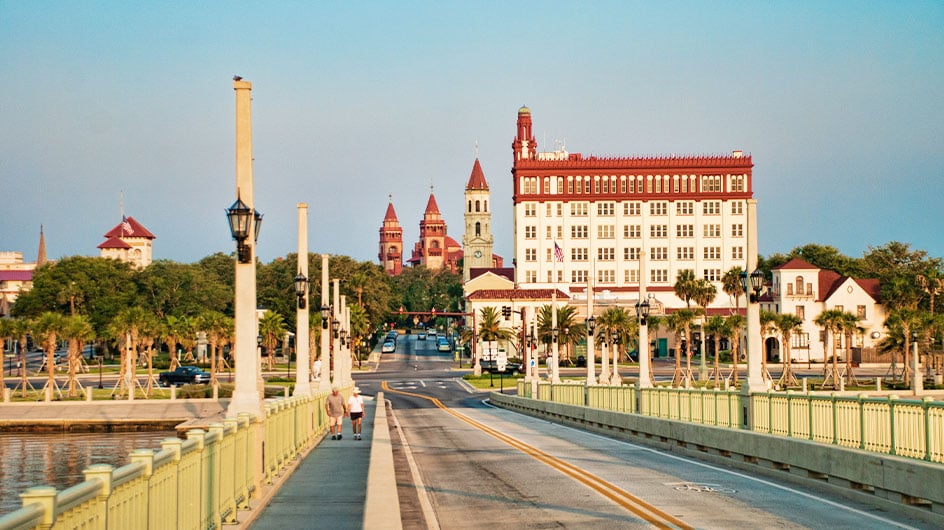

“Oooh, can I go to school here someday?” my teenage daughter exclaims as we stand before what looks like a Spanish Renaissance palace dripping with opulence, from the soaring turrets and arch-framed walkways to the romantic courtyard punctuated by stately iron gates, swaying palm trees, and a fountain adorned with sculptures of turtles and frogs.
Sign me up, too!

What was once the 540-room Hotel Ponce de León is now Ponce de León Hall, a National Historic Landmark and the showpiece of Flagler College—it also houses student residences (for real, dorms!)—in St. Augustine, Florida. Oil and railroad magnate Henry Flagler, who loved St. Augustine’s climate and its health benefits but found a lack of quality hotels there, had directed builders to “spare no expense” in constructing his Gilded Age resort, which opened to rave reviews in 1888.
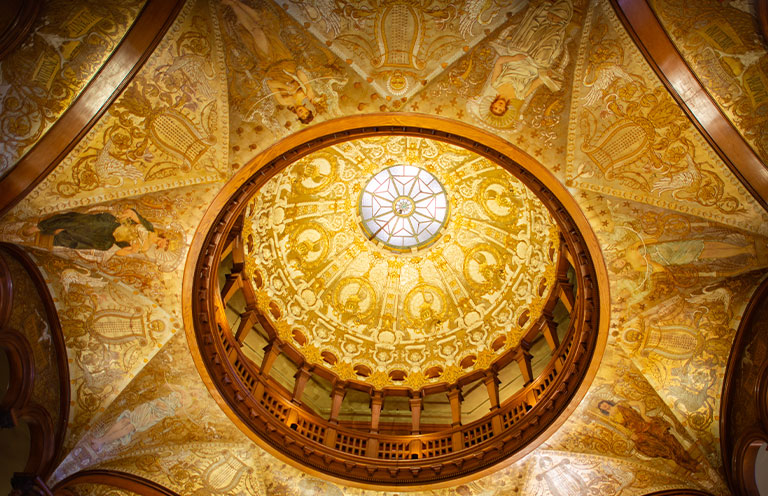
After World War II, however, the hotel fell into disrepair and shuttered in 1967. The following year, the just-founded Flagler College—taking its name from the iconic industrialist—assumed the hotel, eventually restoring it to its former glory.
Daily guided tours are available of the grounds and hall, where the grandeur continues with such appointments as a 68-foot-high domed rotunda, massive oak columns, mosaic tile floors, hand-painted murals on the ceilings, hand-carved caryatids, crystal chandeliers, some 79 Tiffany stained-glass windows, period furniture and artwork—and the list goes on.
Pause for a moment, and you might think that you’ve not only traveled back in time but that you’ve arrived in Spain—no passport required.
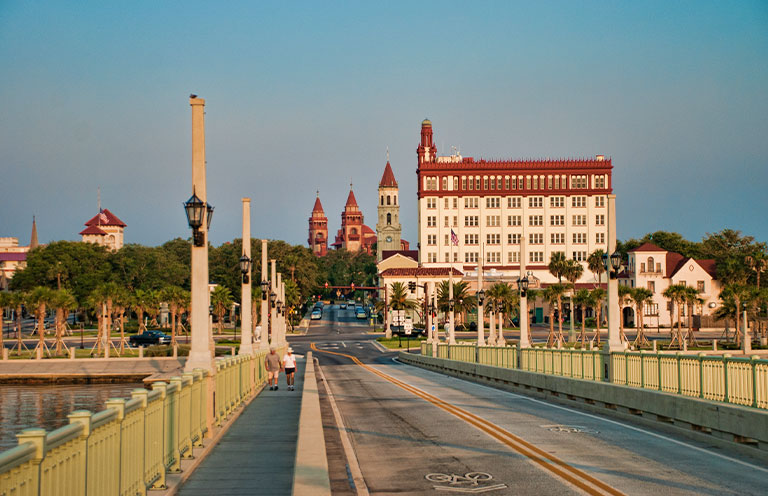
St. Augustine whisks you to Spain
An air of Spain is all around in St. Augustine. No wonder: more than 450 years ago, Spanish explorers arrived on the shores where the indigenous Timucua Indians had been living since 2,400 BC. They established the first European settlement here in 1565, but Juan Ponce de León had landed in the area even earlier, in 1513, while searching for the Fountain of Youth.
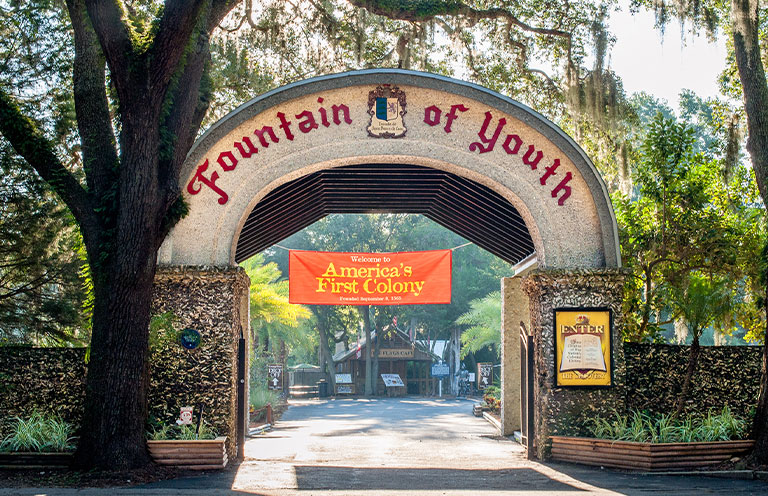
Visitors today can delve into this history at Ponce de León’s Fountain of Youth Archaeological Park, home to a recreated Timucuan village, a reconstructed Franciscan mission, a planetarium, excavation sites and more. And, yes, you can drink the mineral-rich waters from the legendary Spring of Eternal Hope in the park’s Spring House.
Spanish themes also permeate attractions such as the Lightner Museum, which resides in another of Flagler’s former luxury hotels, the Hotel Alcazar. The 1888 Spanish Renaissance Revival building—which displays a fascinating collection of Tiffany lamps, shells from around the world and Victorian musical instruments, among other items—is a work of art itself.
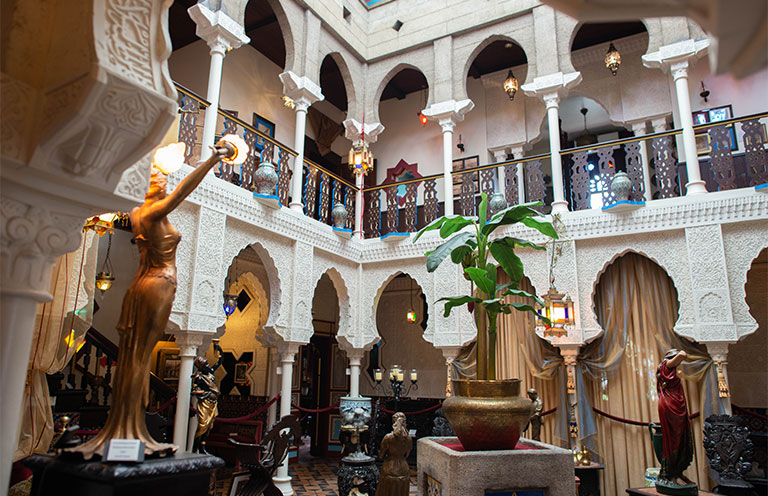
Neighboring the Lightner, the 1883 Moorish Revival Villa Zorayda Museum, once the winter residence of wealthy merchant Franklin W. Smith, takes inspiration from the architecture of the Alhambra Palace in Granada, Spain. After stints as a restaurant and casino/speakeasy, the modern-day museum showcases international cultures through artwork and antiques. Among the conversation pieces is the 2,400-year-old Sacred Cat Rug, woven from the hair of cats that wandered along the Nile River.
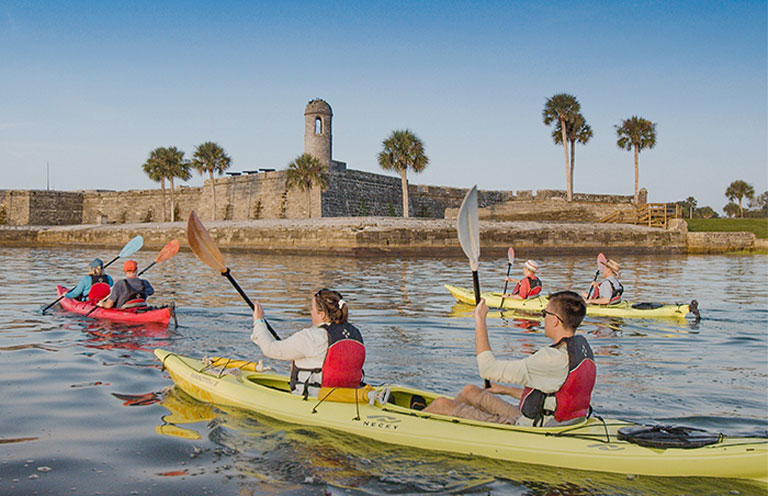
Another must-visit is Castillo de San Marcos. Completed in 1695, it’s the oldest masonry fortress in the continental US. Here, park rangers present living history programs, including cannon and musket demonstrations on most weekends. Across the way, more living history unfolds in the Colonial Quarter, with its climbable Spanish watchtower, blacksmith shop, Spanish garden and Spanish-themed restaurant.
Also, check out the Oldest House Museum Complex, built in the 1700s and the state’s oldest surviving Spanish colonial residence, and the Governor’s House Cultural Center and Museum, which served as headquarters and residences of governors appointed by Spain—and then Britain and then Spain again in a tumultuous political back-and-forth.
St. Augustine is among a handful of North American destinations with European flair. Long to visit Sweden? Take a jaunt to Kansas. Yearning for a Bavarian vacation? Head to the Colorado Rockies. Have dreams of France? Put Québec on your travel itinerary.
Here are a few of our other favorite North American cities that feel like Europe.
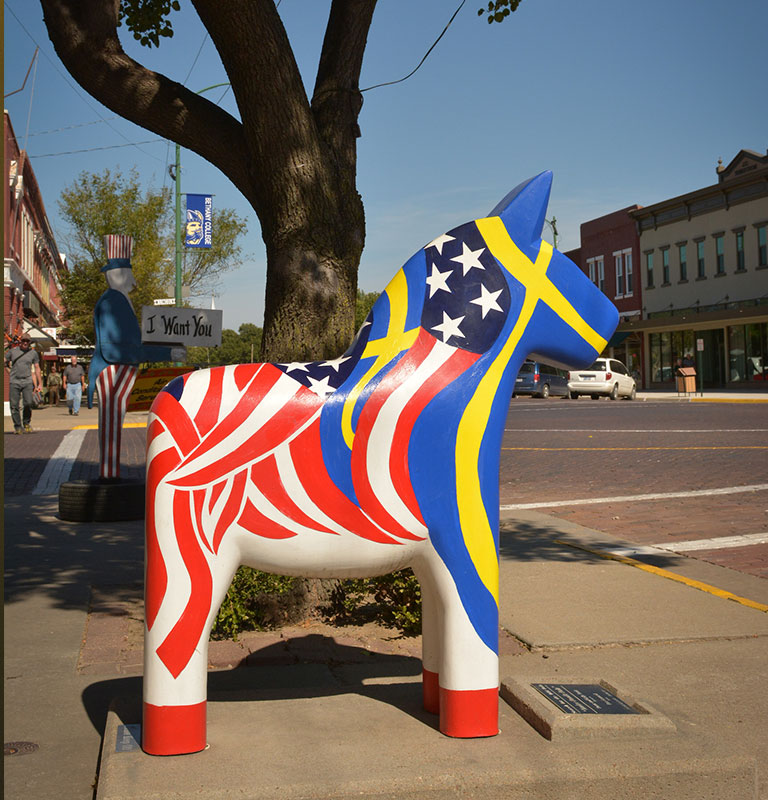
Lindsborg, Kansas, takes you to Sweden
If “we’re not in Kansas anymore” is your reaction upon setting foot in Lindsborg, you’re not alone. That’s because this small town in south-central Kansas feels a lot like Sweden. Perhaps it’s the hand-carved and ornately painted wooden herd of Dala horses that are placed throughout town. Or the aroma of Swedish Mörkrost coffee wafting from the Blacksmith Coffee Shop and Roastery. Or the Swedish flags and välkommen (welcome) signs in store windows.
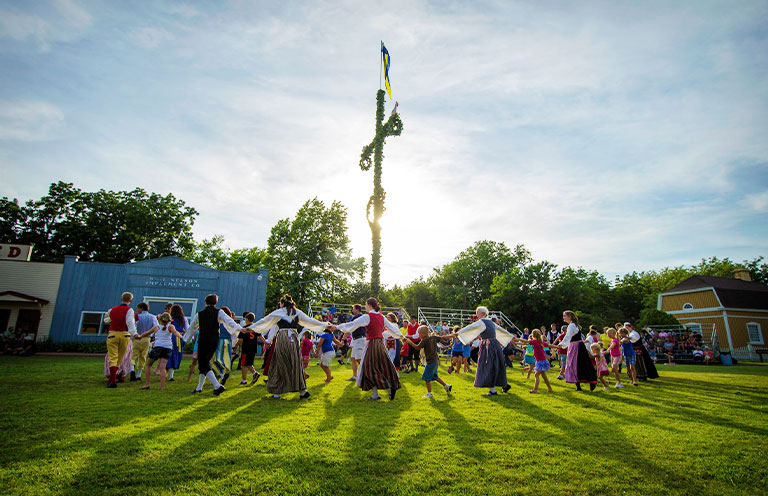
Indeed, Little Sweden USA, as it’s nicknamed, embraces its heritage, which stretches back to the late 19th century when immigrants arrived from the country’s Värmland province to establish a community rich in traditional culture and agriculture in the fertile Smoky Valley.
Be sure to explore the 1874 Höglund Dugout, a prime example of an early Scandinavian home; the Lindsborg Old Mill and Swedish Heritage Museum, with an 1898 flour mill and exhibits focusing on Lindsborg from 1870 to 1910; and the Swedish Pavilion from the 1904 St. Louis World’s Fair. Sweden’s King Carl XVI Gustaf even came to town to rededicate the pavilion in 1976.
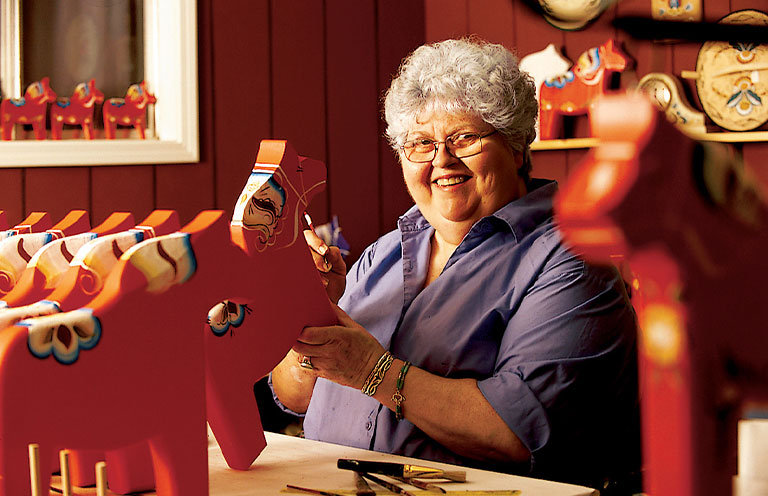
Time your visit for the annual Midsummer’s Festival in mid-June, featuring Swedish folk dancing, authentic Swedish foods, craft demonstrations and more. Watching art demonstrations is also a must at Hemslöjd, where you can chat with artisans and observe them creating those ubiquitous Dala horses. And, explore the paintings and diaries of the Swedish-born artist Birger Sandzén, often referred to as the “American van Gogh,” at the eponymous memorial art gallery.
Finally, don’t forget to enjoy a picnic of Swedish delicacies (may we suggest kringler, an almond-infused pastry?) at Viking Valley Playground in Swensson Park, where you can admire the surrounding Dala horses and mural of a Viking longship by local artists.
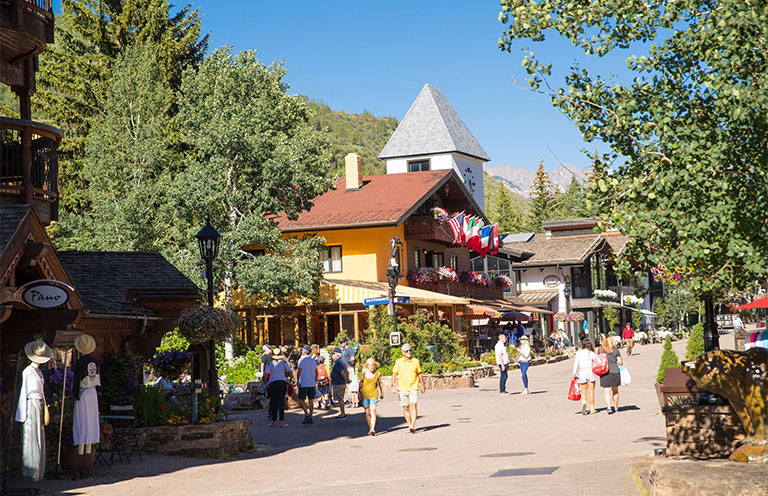
Vail, Colorado, carries you to Bavaria
As you stand perched on a snow-capped Colorado mountain with your skis pointed toward miles of billowy white trails or sit fireside with a glass of wine or cup of cocoa après-ski, you might just have to pinch yourself as a reminder that you’re not in Bavaria.

Nestled in the Colorado Rockies about 100 miles west of Denver, this is Vail, a premier spot to enjoy all manner of the great outdoors in a postcard-perfect village that oozes European charm. Cold-weather months serve up skiing, snowboarding, fat-tire biking (on snow), ice skating, snowshoeing and the like, while warmer months present zip lines, mountain coasters, fishing, biking and hiking trails, and festivals such as Oktoberfest.
But it’s not only the mountainous landscape, which alternates seasonally from a patchwork of rolling hills awash in wildflowers to a tapestry of snow-packed slopes, that gives Vail a Bavarian vibe. This storybook village takes a cue from its alpine cousin with pedestrian-only streets lined with specialty shops, art galleries, and trendy restaurants and bars.
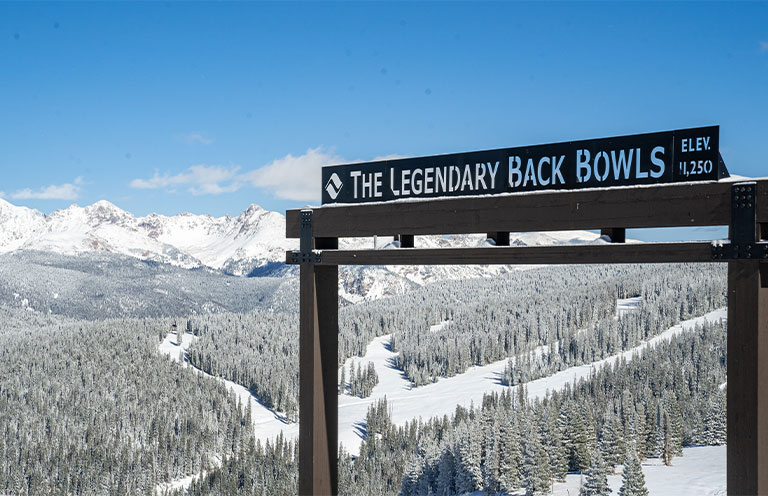
Interestingly, the Bavarian nature of Vail wasn’t inherited; rather, it was adopted in recent times. The Ute Indians first inhabited this land as a summer home before settlers arrived in the mid-1800s. During World War II, the area served as training grounds for the US Army, preparing troops for alpine combat in Northern Italy. After the war, many of the veterans worked in the ski industry. Among them was Pete Seibert of the 10th Mountain Division, who teamed up with fellow skiing enthusiast Earl Eaton to develop this part of the Rockies as a ski resort.
The result: Vail was founded in 1962 and incorporated as a town four years later. Today, its 1,100 acres of open space, 350,000 acres of surrounding national forest and more than 5,300 skiable acres bring a little slice of Bavaria to the Rockies.
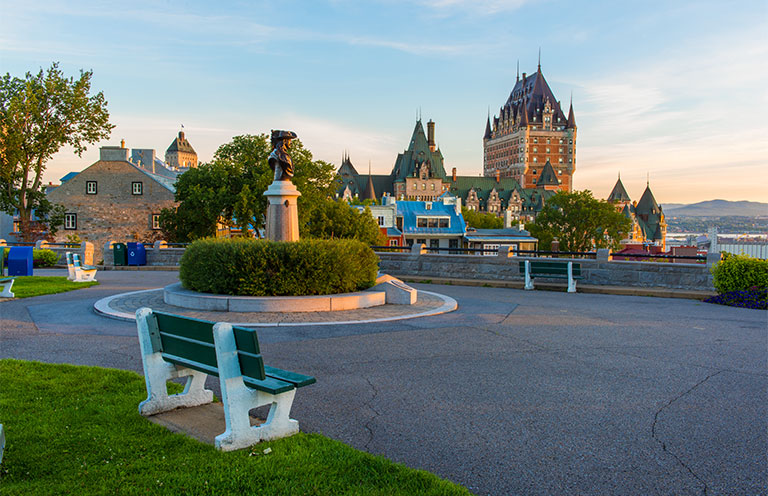
Québec City, Québec, zips you to France
While you’ll need to dust off your passport to visit Québec, this French-speaking city in the eastern Canadian province of the same name brings France closer to home.
Québec’s history is intertwined with that of France—and complicated, to say the least. Several First Nations made their home here for millennia before this land became New France from 1534 to 1763, and then fell under British rule before Canada achieved full sovereignty in 1982. Still, nowhere on the continent can you find a more vibrant Francophone culture today than in Québec’s capital—the only walled city north of Mexico—where French has been the official language since 1974. (English is also widely spoken in tourist areas.)
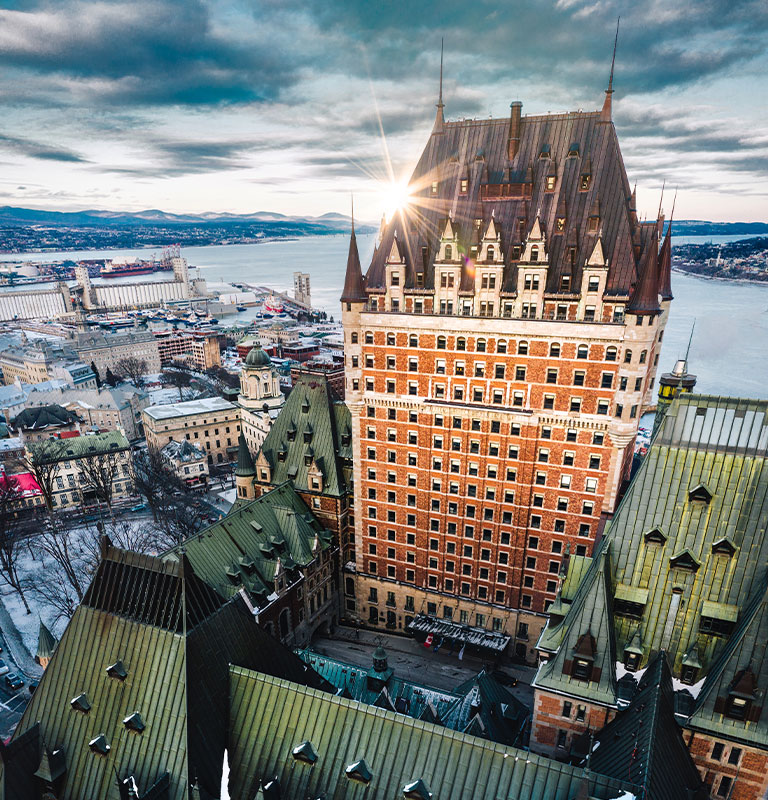
Strolling the cobblestone streets of Old Québec, a UNESCO World Heritage Site, you’ll find the mother lode of must-see attractions. Most famous among them is the fairy-tale 1893 Fairmont Le Château Frontenac poised atop a promontory overlooking the St. Lawrence River, said to be the world’s most-photographed hotel.
Nearby, meander Petit-Champlain, a historic shopping street brimming with locally made goods, and the Old Port, edged with antique shops, art galleries, cafés and restaurants. Stop by Place Royale, where Samuel de Champlain established the first French settlement in North America in 1608, and Église Notre-Dame-des-Victoires, one of the oldest churches (dating to 1688) on the continent.
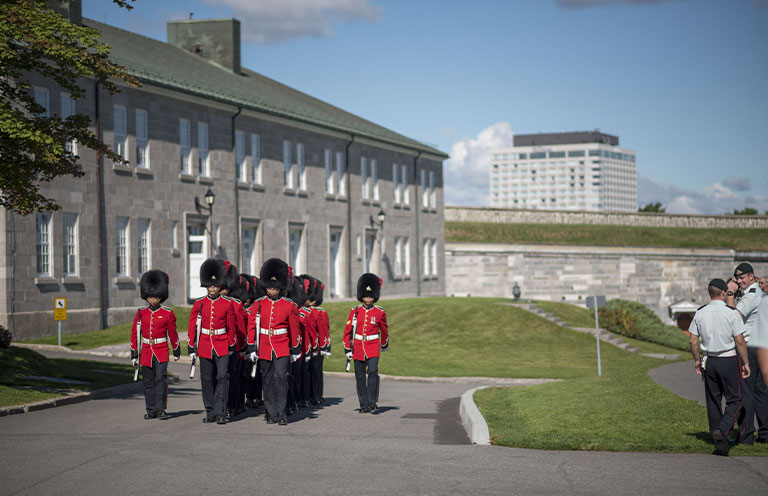
History buffs will also want to visit the 1877 Parliament building, the museum at La Citadelle of the Royal 22 Régiment, and the Plains of Abraham, the site of a historic 1759 battle that is now a public park.
Francophone culture extends beyond the historic district, too, with French-inspired museums, restaurants, and a slew of festivals and performances showcasing Québec’s joie de vivre.
. . . . .
Back in St. Augustine, my daughter and I soak up the European atmosphere and snap photos of Ponce de León Hall to capture our visit. But surely, the memory of this place is one that we won’t soon forget. After all, it swept us away to Spain without us even leaving the States.
